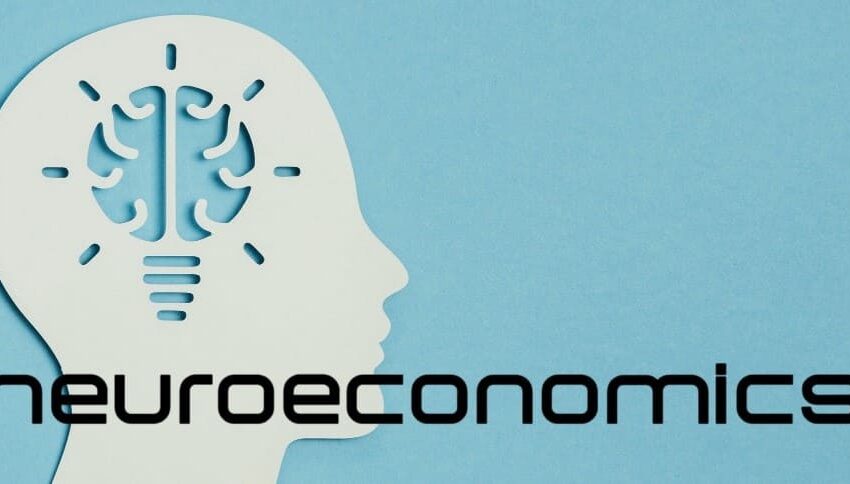
Overview:
As the world grapples with the pressing challenges of climate change, resource depletion, and the growing demand for energy, the quest for sustainable and innovative energy solutions has never been more critical. Traditional energy sources, primarily fossil fuels, have long powered our economies but at a significant environmental cost. To address these issues, researchers, engineers, and visionaries are developing a range of futuristic energy solutions that promise to revolutionize how we generate, store, and utilize energy. These cutting-edge technologies not only aim to reduce greenhouse gas emissions and minimize environmental impact but also to enhance energy security and resilience.
Futuristic energy solutions encompass a diverse array of technologies, each with the potential to transform our energy landscape. From the limitless potential of nuclear fusion to the innovative use of space-based solar power, these advancements hold the promise of providing abundant, clean, and reliable energy. Alongside these, other emerging technologies such as artificial photosynthesis, advanced battery systems, and small modular reactors offer groundbreaking approaches to meet our future energy needs sustainably. As we delve into these visionary solutions, it becomes clear that the future of energy is both exciting and essential for the well-being of our planet and its inhabitants.
So, let’s look at those prominent Futuristic Energy Solutions with some key examples:
1. Advanced Nuclear Energy:
Fusion Reactors:
Unlike current nuclear fission reactors, fusion reactors aim to replicate the energy-producing process of the sun by fusing hydrogen isotopes to form helium, releasing vast amounts of energy with minimal radioactive waste. Projects like ITER (International Thermonuclear Experimental Reactor) are at the forefront of this research.
Examples:
ITER (International Thermonuclear Experimental Reactor): A multinational project in France aiming to demonstrate the feasibility of nuclear fusion as a large-scale and carbon-free energy source.
SPARC (MIT and Commonwealth Fusion Systems): A project that aims to develop a compact and high-field fusion reactor with the potential for commercial use.
Small Modular Reactors (SMRs):
SMRs are compact, factory-built nuclear reactors that offer improved safety, flexibility, and lower costs compared to traditional large reactors. Their modular design enables factory fabrication and scalable deployment, reducing construction times and costs, and enhancing the deployment of nuclear energy in remote locations or integrated with renewable energy sources for a hybrid energy system.
Examples:
NuScale Power (USA): Developing a scalable SMR design that provides 60 megawatts of electricity per module, with the first plant planned for Idaho National Laboratory.
Rolls-Royce SMR (UK): Developing a 470-megawatt SMR design aimed at providing low-cost, low-carbon electricity with enhanced safety features.
China National Nuclear Corporation (CNNC): Developing the ACP100 SMR, which is designed to provide 125 megawatts of electricity, with the first plant under construction in Hainan province.
2. Space-Based Solar Power:
Solar Power Satellites:
Collecting solar energy in space using satellites equipped with solar panels and transmitting it to Earth via microwave or laser beams. This method can potentially provide continuous and abundant solar energy, unaffected by weather or time of day.
Examples:
JAXA’s Space Solar Power System: The Japan Aerospace Exploration Agency is working on technology to beam solar energy collected in space back to Earth.
China’s Space-Based Solar Power Plan: China has announced plans to build a space-based solar power station capable of beaming energy to Earth by 2035.
3. Artificial Photosynthesis:
Solar Fuels:
Mimicking the natural process of photosynthesis to create fuels like hydrogen or hydrocarbons directly from sunlight, water, and carbon dioxide. This approach could provide a sustainable source of liquid fuels for transportation and industrial use.
Examples:
Joint Center for Artificial Photosynthesis (JCAP): A U.S. Department of Energy research center focused on developing technologies that mimic photosynthesis to produce renewable fuels.
Silicon Valley’s Caltech and Berkeley Lab: Researchers are working on using sunlight to convert carbon dioxide and water into renewable fuels.
4. Advanced Battery Technologies:
Solid-State Batteries:
Utilizing solid electrolytes instead of liquid ones, offering higher energy densities, faster charging times, and improved safety compared to traditional lithium-ion batteries.
Examples:
Toyota: Investing in solid-state battery technology to create longer-lasting, safer, and faster-charging batteries for electric vehicles.
QuantumScape: A company developing solid-state lithium-metal batteries with higher energy densities and improved safety.
Metal-Air Batteries:
Leveraging metals like aluminum or zinc to react with oxygen from the air, potentially providing very high energy densities for long-lasting energy storage.
Examples:
Phinergy: An Israeli company developing aluminum-air batteries that can provide high energy density for electric vehicles and other applications.
Fluidic Energy: Working on zinc-air batteries for large-scale energy storage solutions.
5. Thermonuclear Propulsion:
Nuclear Thermal Propulsion (NTP):
Using nuclear reactions to heat a propellant like hydrogen to produce thrust for space exploration. This technology could significantly reduce travel time to distant planets and facilitate deep space missions.
Examples:
NASA’s NTP Program: Researching nuclear thermal propulsion systems for potential use in future manned missions to Mars.
DARPA’s DRACO Program: Developing a demonstration rocket for agile cislunar operations using nuclear thermal propulsion.
6. Quantum Dot Solar Cells:
High-Efficiency Solar Cells:
Utilizing quantum dots (nanoscale semiconductor particles) to create solar cells with higher efficiency and lower manufacturing costs compared to conventional silicon-based solar cells.
Examples:
QD Solar: A startup working on commercializing quantum dot solar cells that promise higher efficiency and lower manufacturing costs.
Los Alamos National Laboratory: Researchers are developing quantum dot-based solar cells with the potential for high efficiency and flexible applications.
7. Piezoelectric Energy Harvesting:
Mechanical Energy Conversion:
Capturing energy from mechanical vibrations, pressure, and movements through piezoelectric materials, which generate electricity when subjected to mechanical stress. This technology can power small devices and sensors.
Examples:
EnOcean: A company that creates energy-harvesting wireless sensors powered by piezoelectric energy from mechanical movements.
PowerLeap: Developing floor tiles that generate electricity from the pressure of footsteps.
8. Algae Biofuels:
Algal Bioenergy:
Producing biofuels from algae, which can grow rapidly and produce high yields of oil that can be converted into biodiesel or other biofuels. Algae cultivation can also sequester carbon dioxide and provide a sustainable alternative to traditional biofuels.
Examples:
Sapphire Energy: A company producing renewable crude oil from algae, aiming to replace fossil fuels with sustainable biofuels.
Algenol: Using algae to produce ethanol and other biofuels with a process that captures and utilizes CO2.
9. Tidal and Wave Energy:
Marine Energy Conversion:
Harnessing the kinetic energy from ocean tides and waves to generate electricity. Technologies like underwater turbines and oscillating water columns can provide reliable and predictable sources of renewable energy.
Examples:
Swansea Bay Tidal Lagoon: A proposed project in the UK to harness tidal energy to generate electricity.
Pelamis Wave Power: Developed wave energy converters to capture the energy from ocean waves and convert it into electricity.
10. Thermoelectric Generators:
Heat-to-Electricity Conversion:
Converting waste heat from industrial processes, engines, and even human bodies into electricity using thermoelectric materials, which generate power when subjected to temperature differences.
Examples:
Alphabet Energy: Creating thermoelectric generators that convert waste heat from industrial processes into electricity.
Tegma: Developing thermoelectric modules for various applications, including automotive and industrial sectors.
11. Superconducting Power Cables:
Lossless Transmission:
Utilizing superconducting materials that can conduct electricity without resistance when cooled to very low temperatures, enabling highly efficient power transmission over long distances with minimal energy loss.
Examples:
American Superconductor (AMSC): Producing superconducting cables for efficient power transmission with minimal energy loss.
Southwest Jiaotong University: Developed a superconducting cable project in China to improve the efficiency of the power grid.
Before closing, let’s also explore a few uncommon yet powerful energy solutions to meet our growing demand:
A. Geothermal Energy Restoration:
Geothermal energy harnesses heat from within the Earth to generate electricity or provide direct heating. Uses geothermal heat directly for heating buildings, greenhouses, and industrial processes. Utilizes geothermal power plants, which convert heat from geothermal reservoirs to electricity through steam turbines.
Examples:
The Geysers (California, USA): The largest complex of geothermal power plants in the world, with a capacity of over 1.5 gigawatts.
Hellisheiði Power Station (Iceland): One of the largest geothermal power stations, producing around 303 megawatts of electricity and 400 megawatts of thermal energy.
Nesjavellir Geothermal Power Station (Iceland): Provides electricity and hot water for space heating in the capital city of Reykjavik.
B. Pumped Hydroelectric Storage:
Pumped hydroelectric storage is a form of energy storage that utilizes surplus electricity to pump water from a lower reservoir to an upper reservoir, and then releases the water to generate electricity through turbines when needed.
Examples:
Dinorwig Power Station (Wales, UK): Also known as the Electric Mountain, it can generate up to 1.728 gigawatts of power, providing rapid response to peak electricity demand.
Bath County Pumped Storage Station (Virginia, USA): The largest pumped storage facility in the world, with a capacity of 3 gigawatts.
Cruachan Power Station (Scotland, UK): Built inside a hollowed-out mountain, it can generate up to 440 megawatts of electricity.
C. Compressed Air Energy Storage (CAES):
CAES stores energy by compressing air in underground caverns or tanks and releasing it to generate electricity. It uses electricity to compress air and store it in underground caverns, tanks, or aquifers, and then releases the compressed air to drive turbines and generate electricity when needed.
Examples:
McIntosh CAES Plant (Alabama, USA): One of the few operational CAES plants in the world, with a capacity of 110 megawatts.
ADELE Project (Germany): An advanced adiabatic CAES project aimed at improving the efficiency and storage capacity of CAES systems.
Summing Up:
In conclusion, the exploration and development of futuristic energy solutions represent a pivotal step toward a more sustainable and resilient energy future. These innovative technologies, ranging from nuclear fusion and space-based solar power to advanced battery systems and artificial photosynthesis, offer the potential to significantly reduce our reliance on fossil fuels and mitigate the impacts of climate change. By investing in these cutting-edge approaches, we can pave the way for a cleaner, more efficient, and secure energy landscape.
The continued advancement and implementation of these solutions will be crucial in meeting the growing global energy demands while ensuring environmental stewardship and economic stability. As we embrace these futuristic energy solutions, we move closer to realizing a world where clean, abundant energy is accessible to all, fostering a healthier and more sustainable future for generations to come.












6 thoughts on “Exploring 11 Innovative and Futuristic Energy Solutions for a Cleaner and Sustainable World”